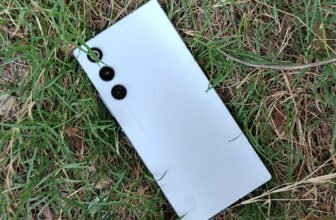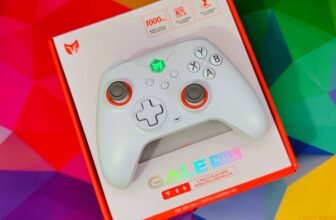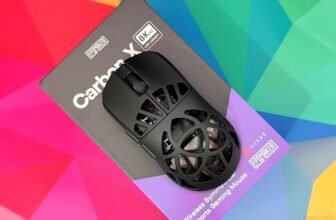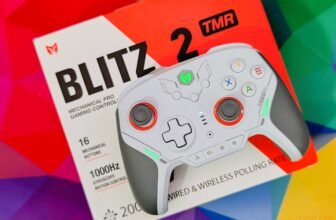Budget controllers that work across multiple platforms have become a popular choice for gamers, especially those who play on both PC and Switch. MOJHON, the new brand name replacing BigBigWon, is stepping into this space with the Aether controller. BigBigWon was known for models like the Rainbow 2 Pro and Blitz2, and the Aether is the first release under the MOJHON name.
The MOJHON Aether keeps the focus on affordability while still bringing in features that appeal to a wide range of players. It supports multiple platforms, includes an LCD screen for quick adjustments, and offers responsive analog sticks that handle well in competitive shooters and larger AAA games. The D-pad can feel a little tricky for diagonal inputs, but the overall design aims to balance price and performance.
This review takes a closer look at the Aether to see how it performs in daily use. From build quality to input response and customization options, the goal is to find out whether MOJHON’s first controller under its new branding delivers enough to compete in a crowded budget market.
Specifications
| Feature | Details |
|---|---|
| Layout | Xbox |
| Compatibility | PC, Mobile Devices, Nintendo Switch |
| Connectivity | Wired, 2.4 GHz Wireless, Bluetooth |
| Analog Sticks | K-Silver JH13 Hall Effect |
| Triggers | Hall Effect |
| Main Switches | Membrane (ABXY), Mechanical (D-Pad) |
| Additional Switches | 2 Remappable (Rear) |
| Gyroscope | No |
| Vibration Motors | Two Asymmetric |
| Battery Capacity | 600 mAh |
| Polling Rate | 1000 Hz |
| Color Options | White |
| Docking Station | None |
| Price (at Review) | $29.99 |
Unboxing
The MOJHON Aether comes in a small cardboard box with a clean black design and orange accents. The front shows a clear picture of the controller, while the back lists main features like a 1000Hz polling rate for both wired and wireless use, a smart display for real-time adjustments, and a 12‑month warranty.
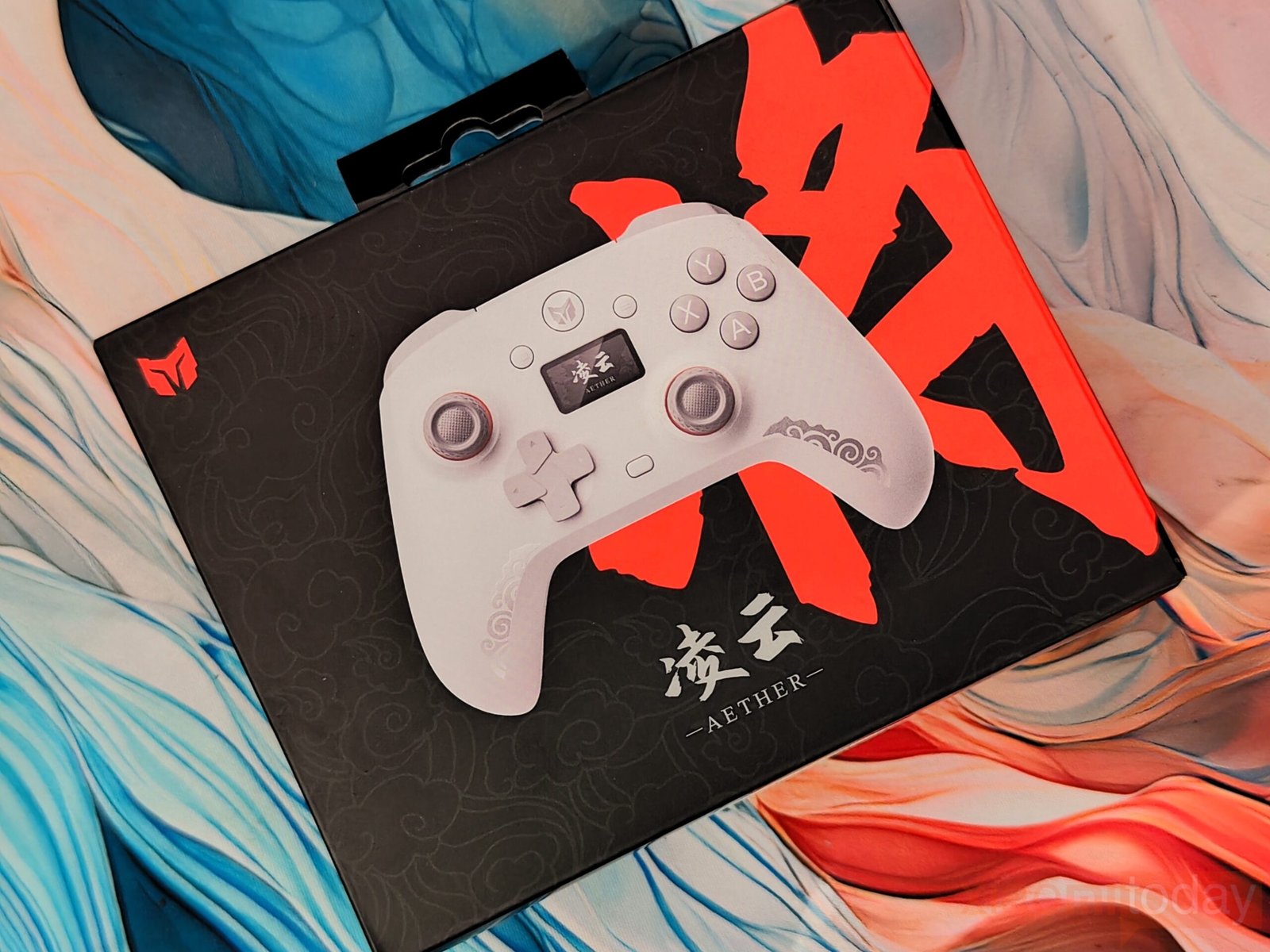
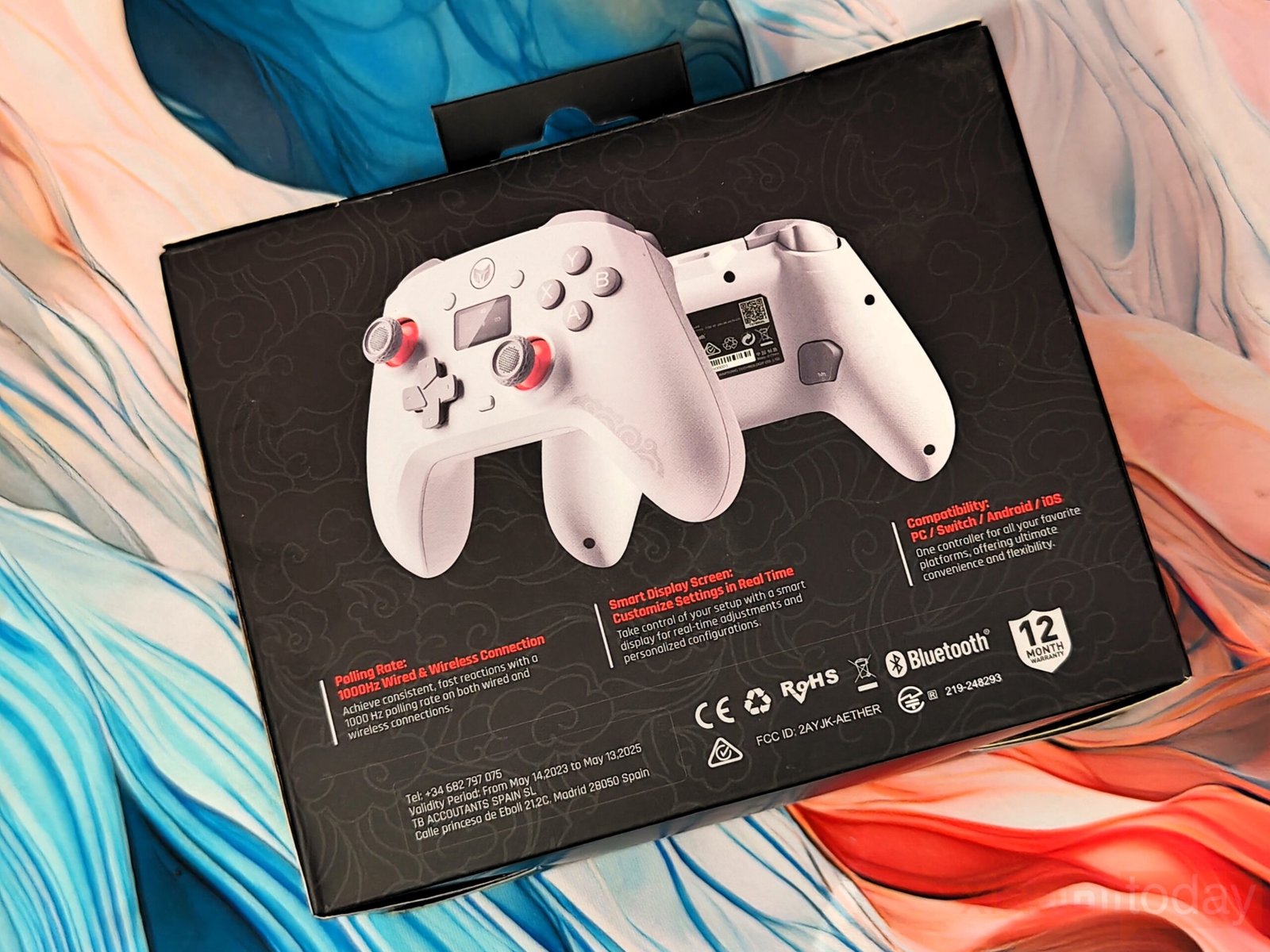
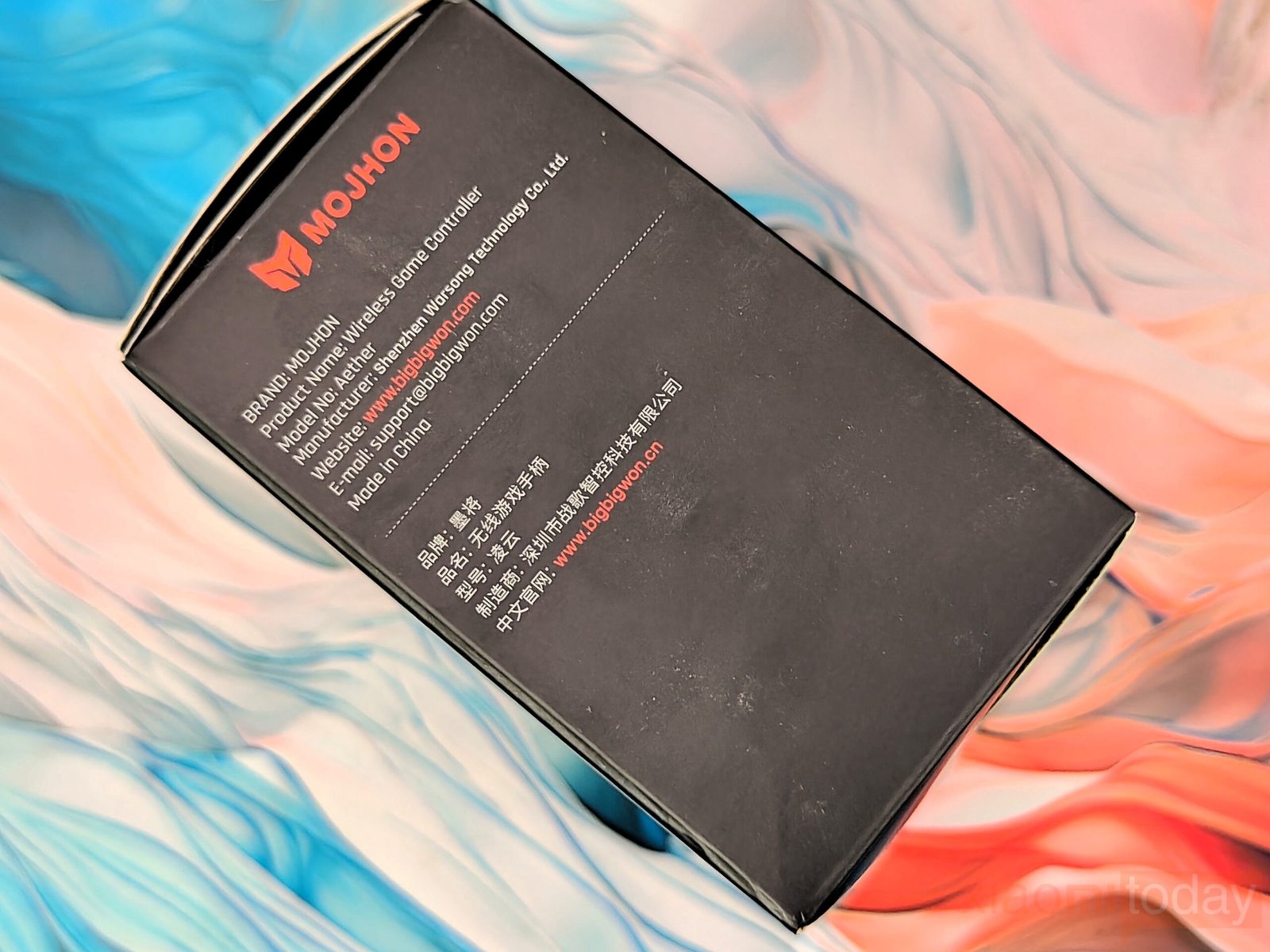
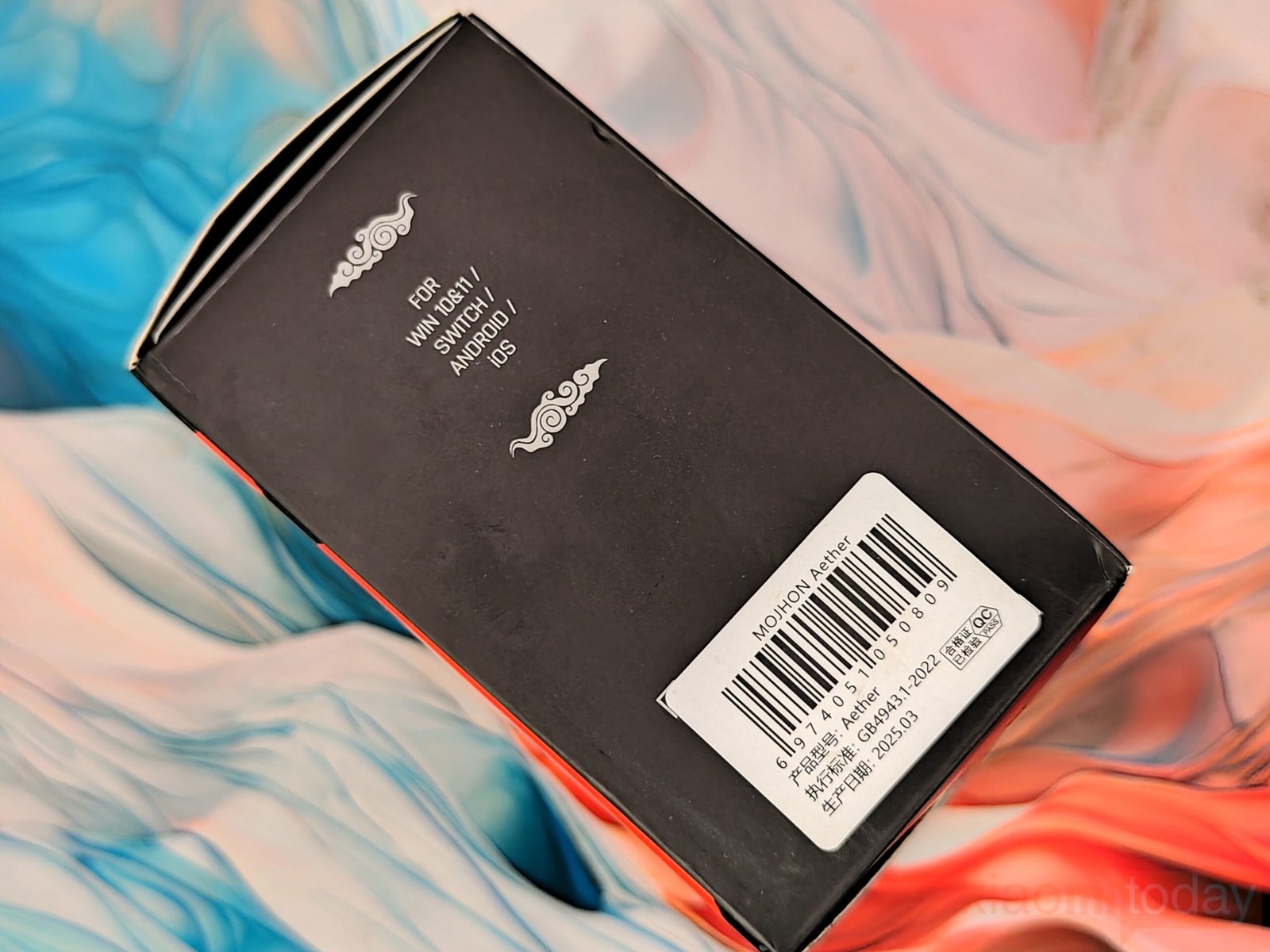
The left side of the box carries the MOJHON logo, product name, and model details, along with manufacturer information. On the right side, the packaging highlights compatibility, showing support for Windows 10/11, Nintendo Switch, Android, and iOS. The layout keeps everything simple and easy to understand.
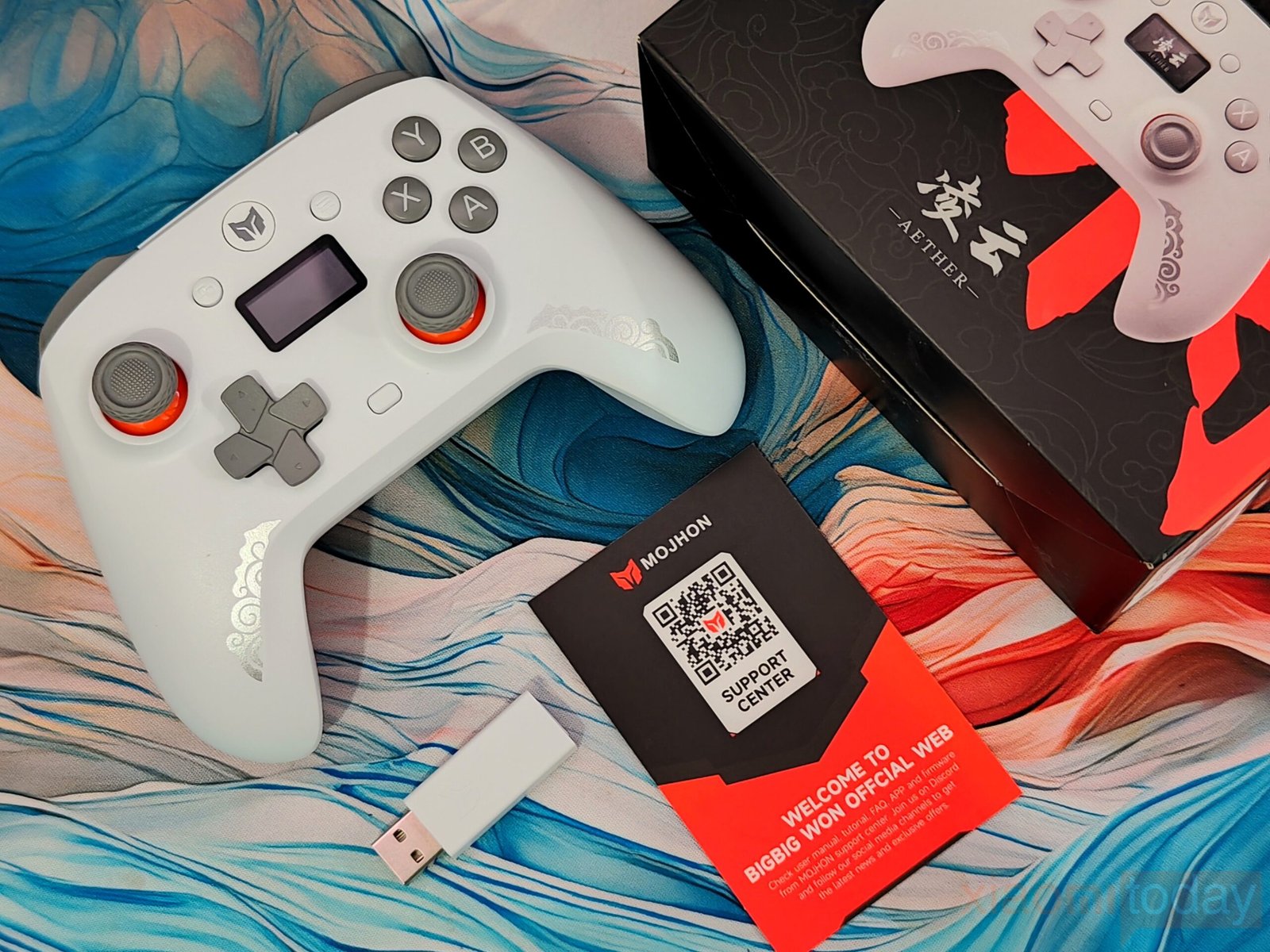
The box includes just the controller and a 2.4 GHz receiver. A small card with a QR code links to the digital manual, as no printed version is provided. There is also no charging cable included. This stripped-down package is part of the company’s effort to reduce costs, allowing them to add a screen while keeping the controller priced at $29.99.
Design
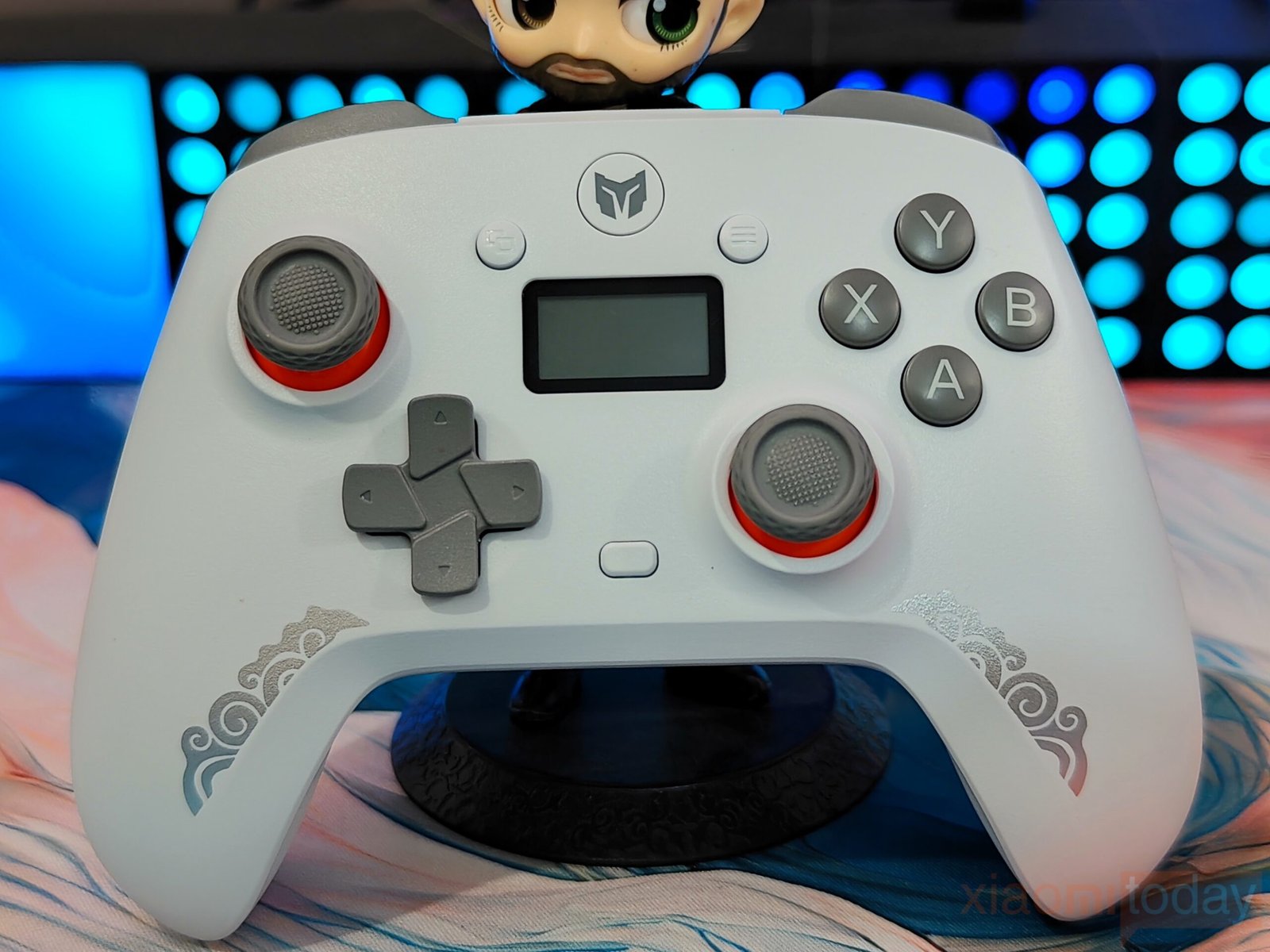
The Aether controller is made from sturdy plastic and feels solid in the hands. It uses the standard Xbox layout, so it is easy to start using without any learning curve. The grips are shaped for comfort and have a cloud-like texture that improves grip while adding a bit of style. The analog sticks move smoothly and come with an orange highlight, while the D-pad is precise, and the ABXY buttons give clear feedback. A small screen is placed in the center, adding extra utility without cluttering the design.
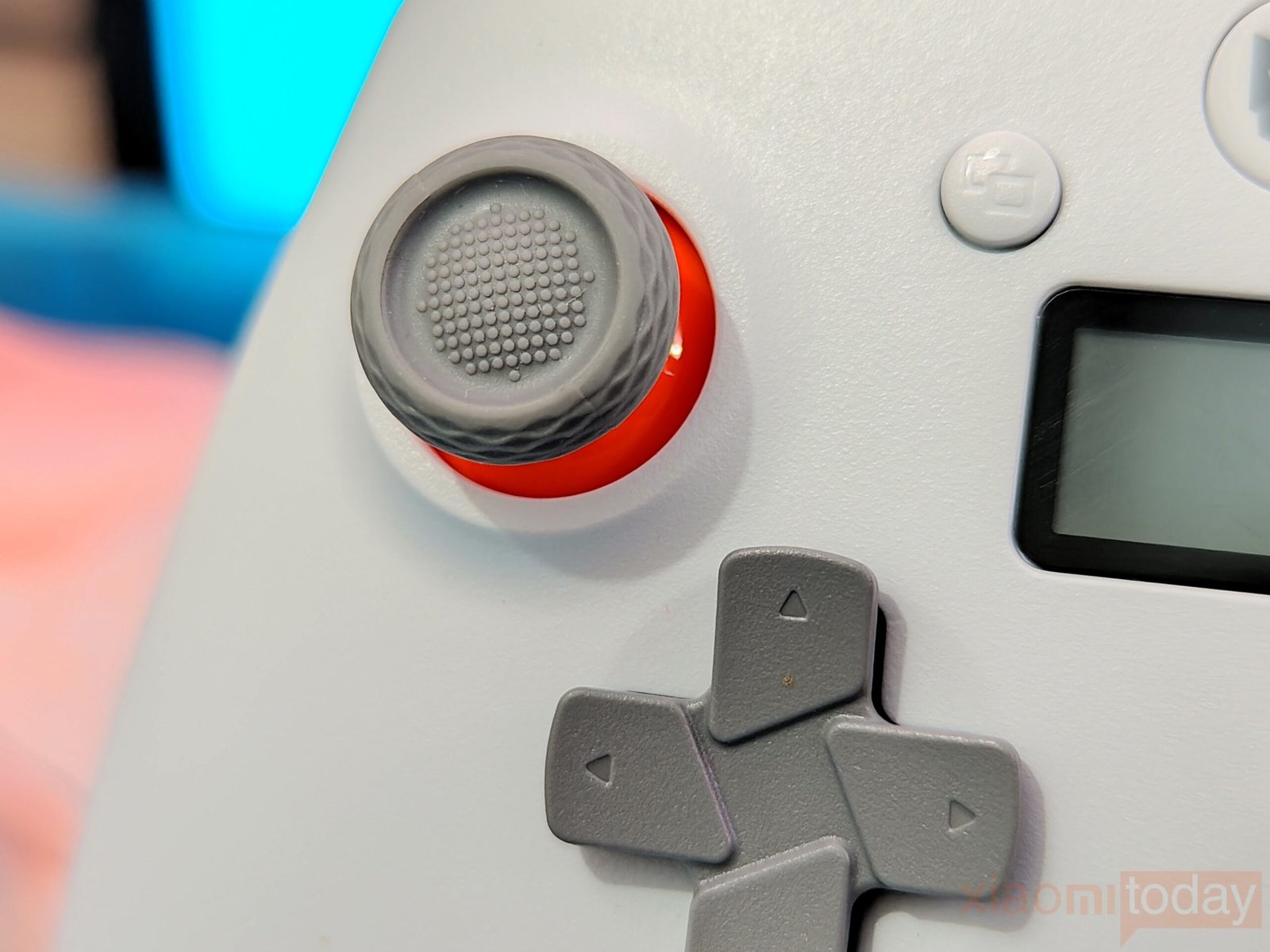
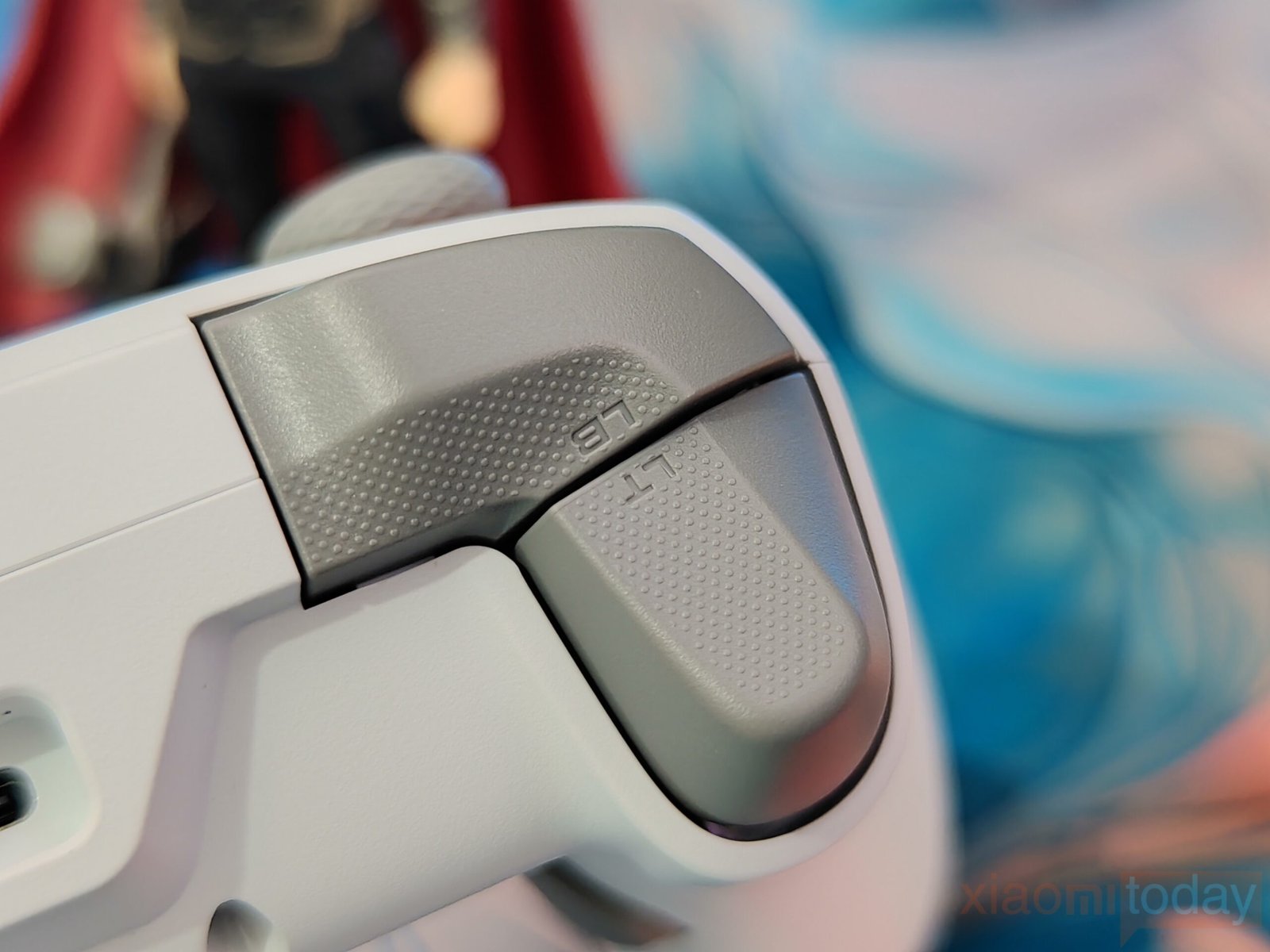
The analog sticks feature a textured surface that keeps grip secure during long gaming sessions and prevents slipping. Movement feels smooth with just the right amount of resistance for accurate control. The grey-finished triggers respond evenly to pressure, producing a click that feels balanced without being too soft or too stiff. Their layout fits well for most hand sizes, though players with larger hands may find the reach a little too close. With Hall Effect sensors in both sticks and triggers, precision and durability are improved, and the option to switch between Linear and Quick Trigger modes gives players flexibility for FPS and action games.
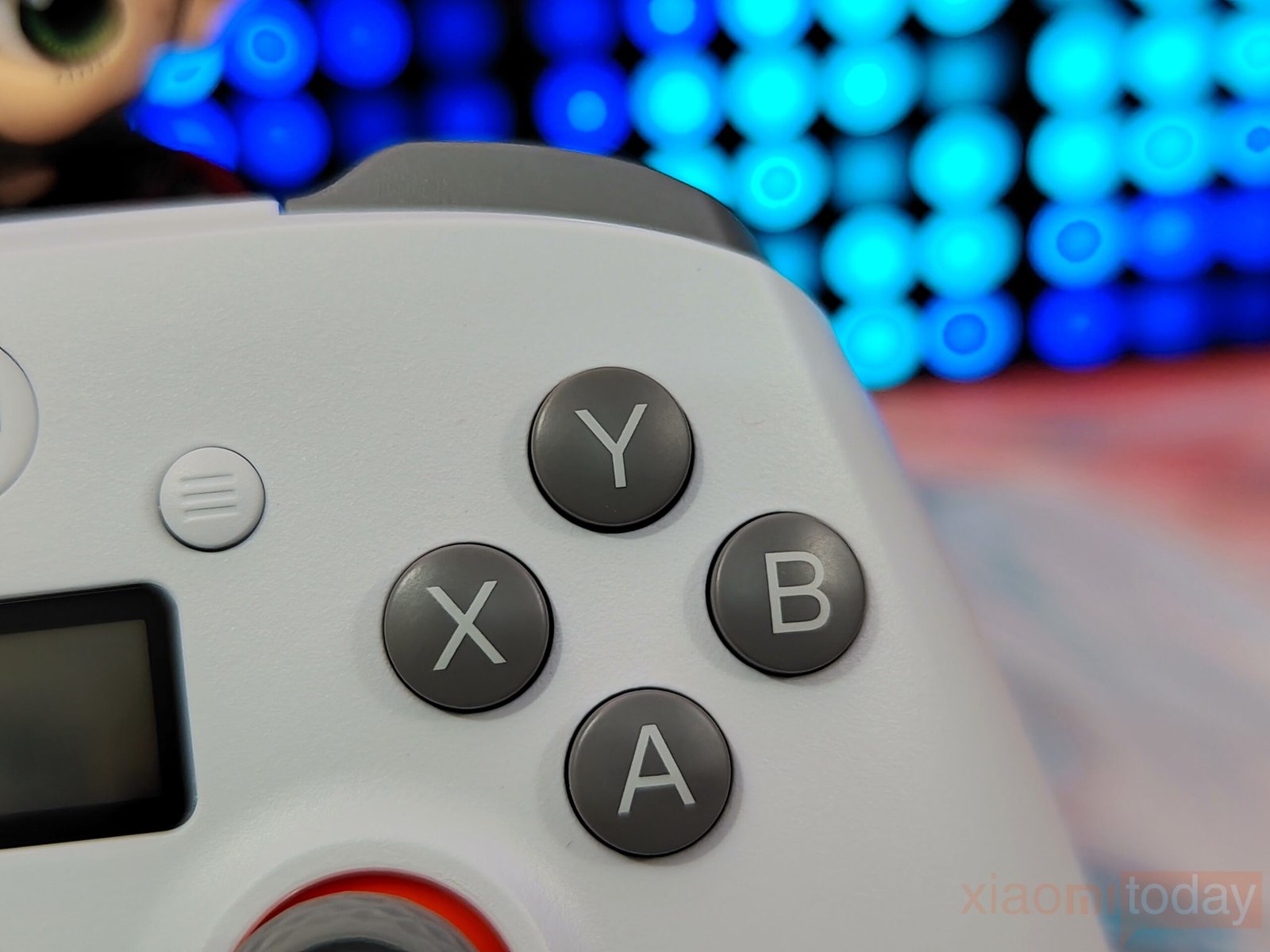
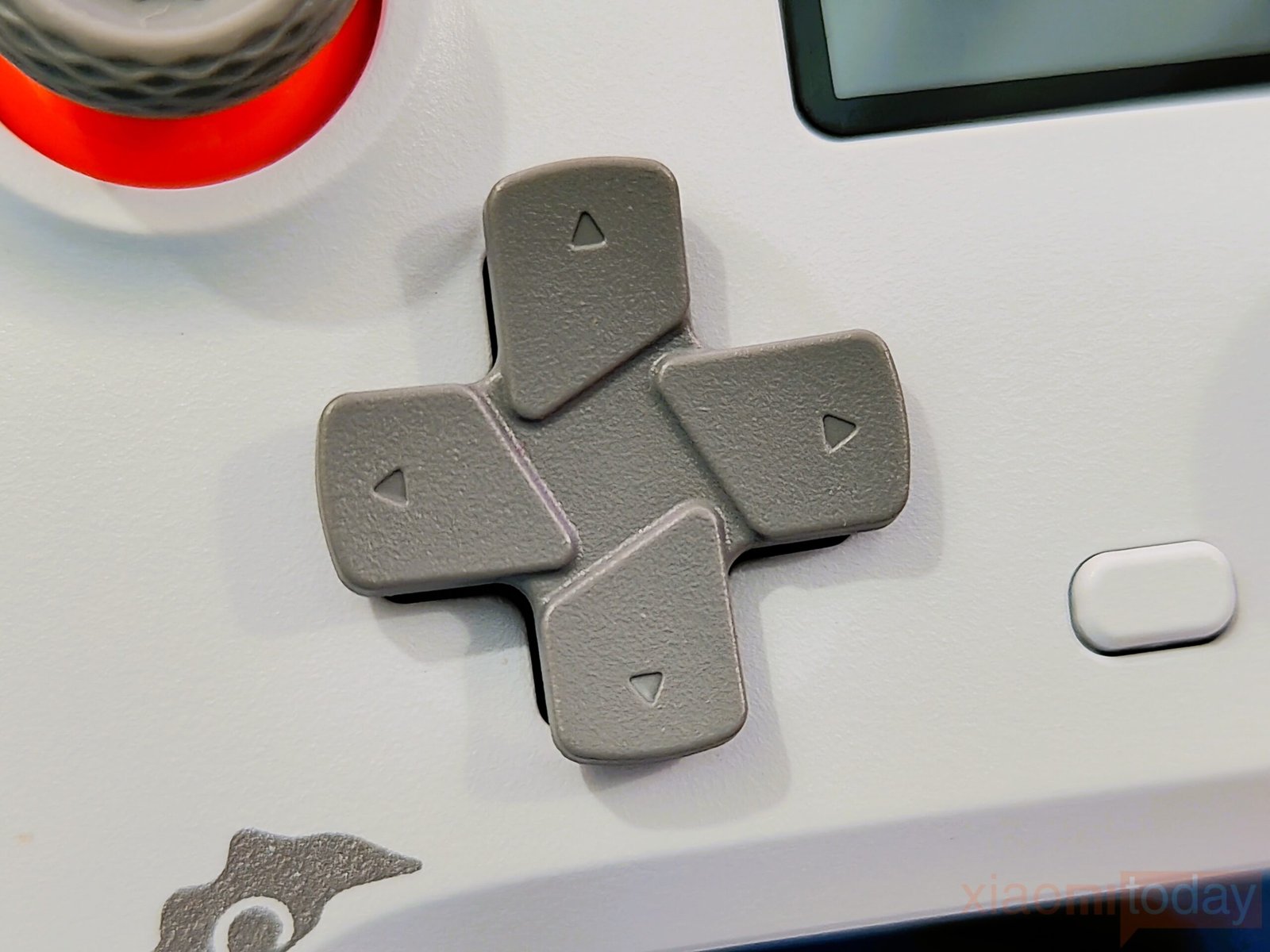
The Aether controller brings useful improvements to its main controls. The ABXY buttons use a foam pad design rated for up to 2 million presses, giving each input a softer feel while keeping the response consistent during gameplay. This change helps reduce finger fatigue in long sessions without affecting accuracy. The D-pad has also been updated with tactile switches and a silicone pad, providing quicker input recognition and better control for precise movements. These updates make the controller comfortable to use while keeping performance reliable across different game types.
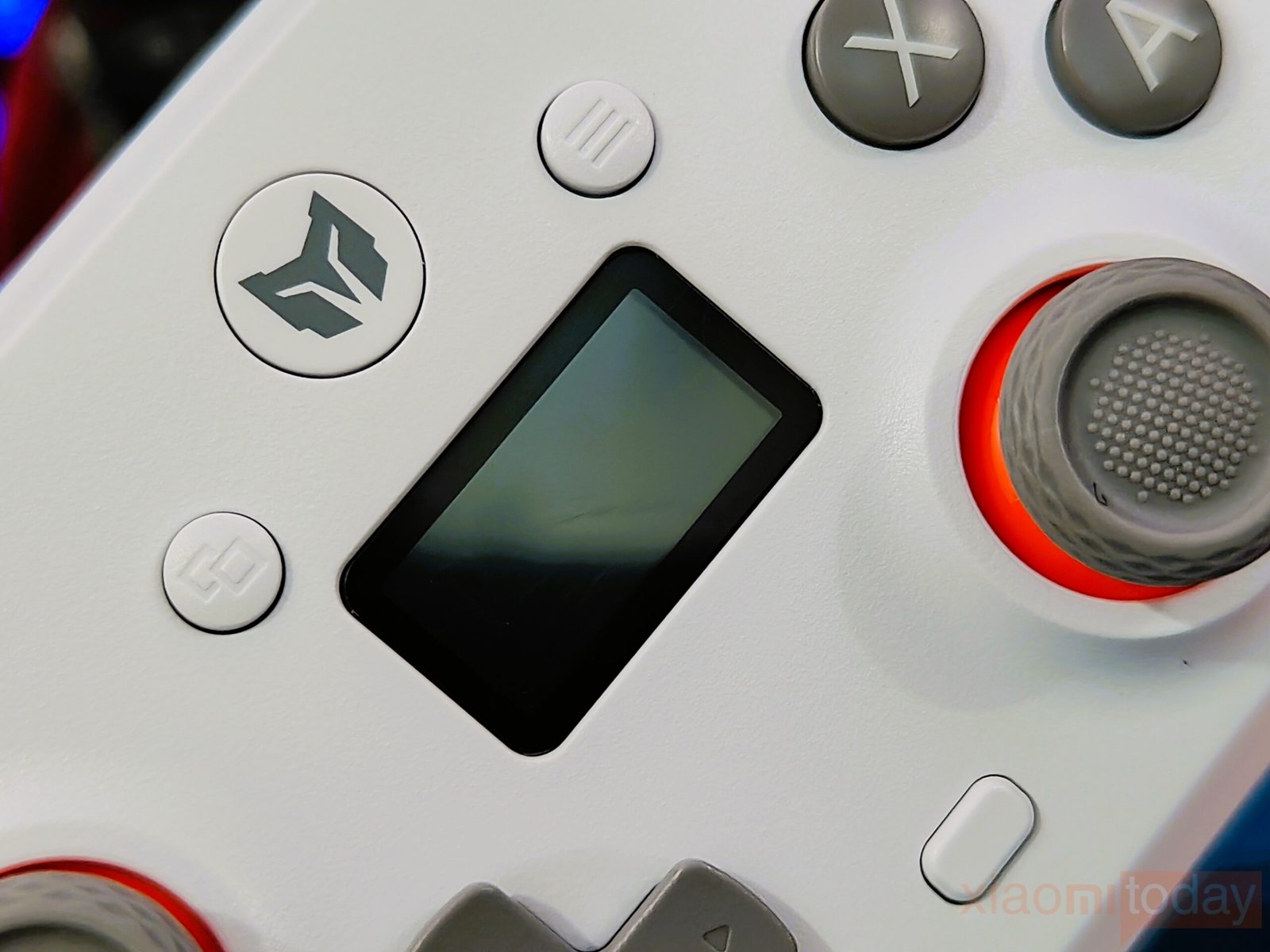
The front panel includes four main buttons: Home, Start, Select, and Function, placed around the central display for convenience. They have a solid tactile feel, responding well to each press and giving a sense of reliability. The layout makes it easy to reach the buttons during gameplay, allowing quick access without interrupting the experience.
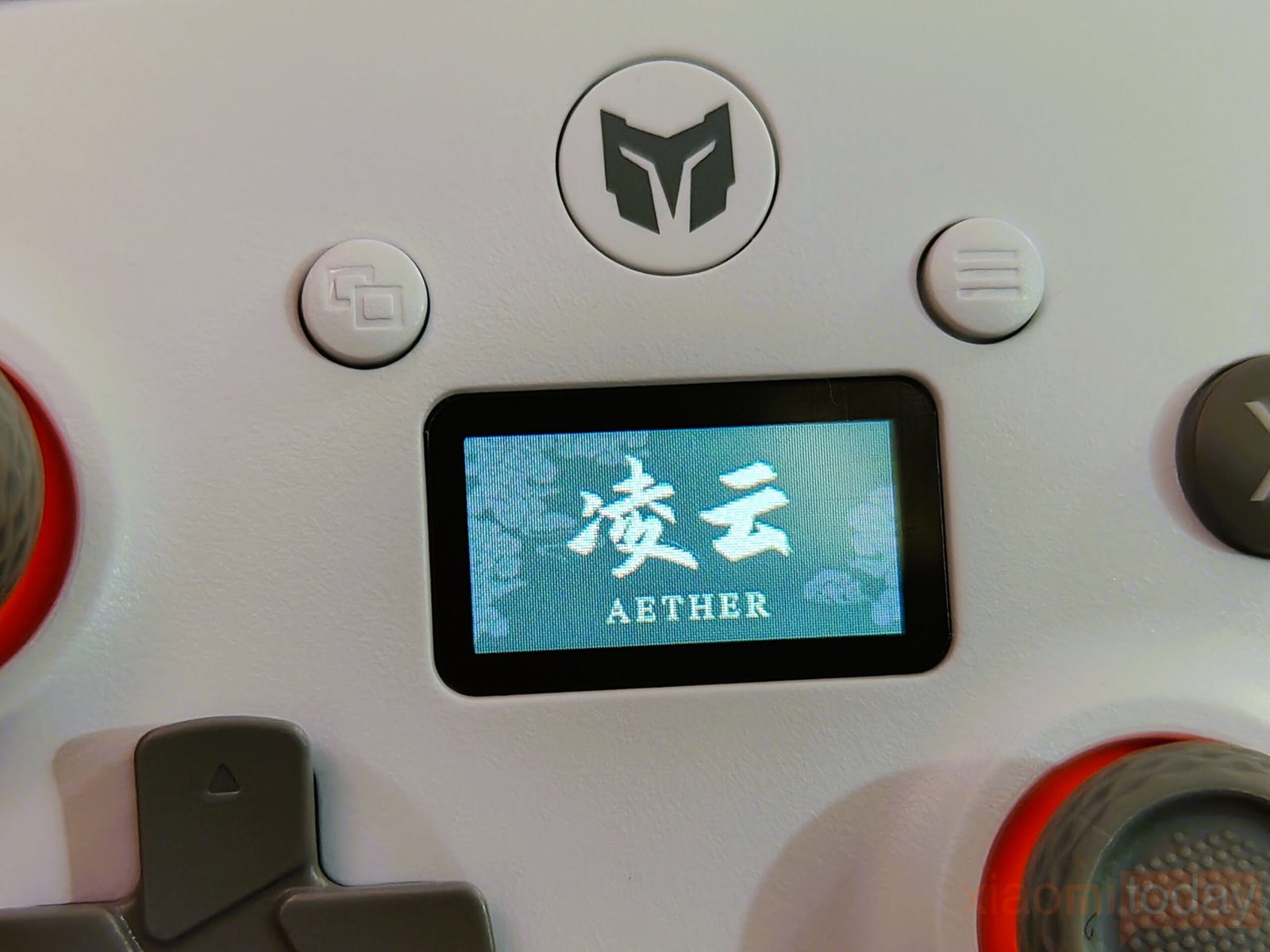
The controller integrates a 0.98-inch display that provides quick access to important settings and information. It shows battery level, connection status, and other details, while also allowing direct adjustments without opening software.
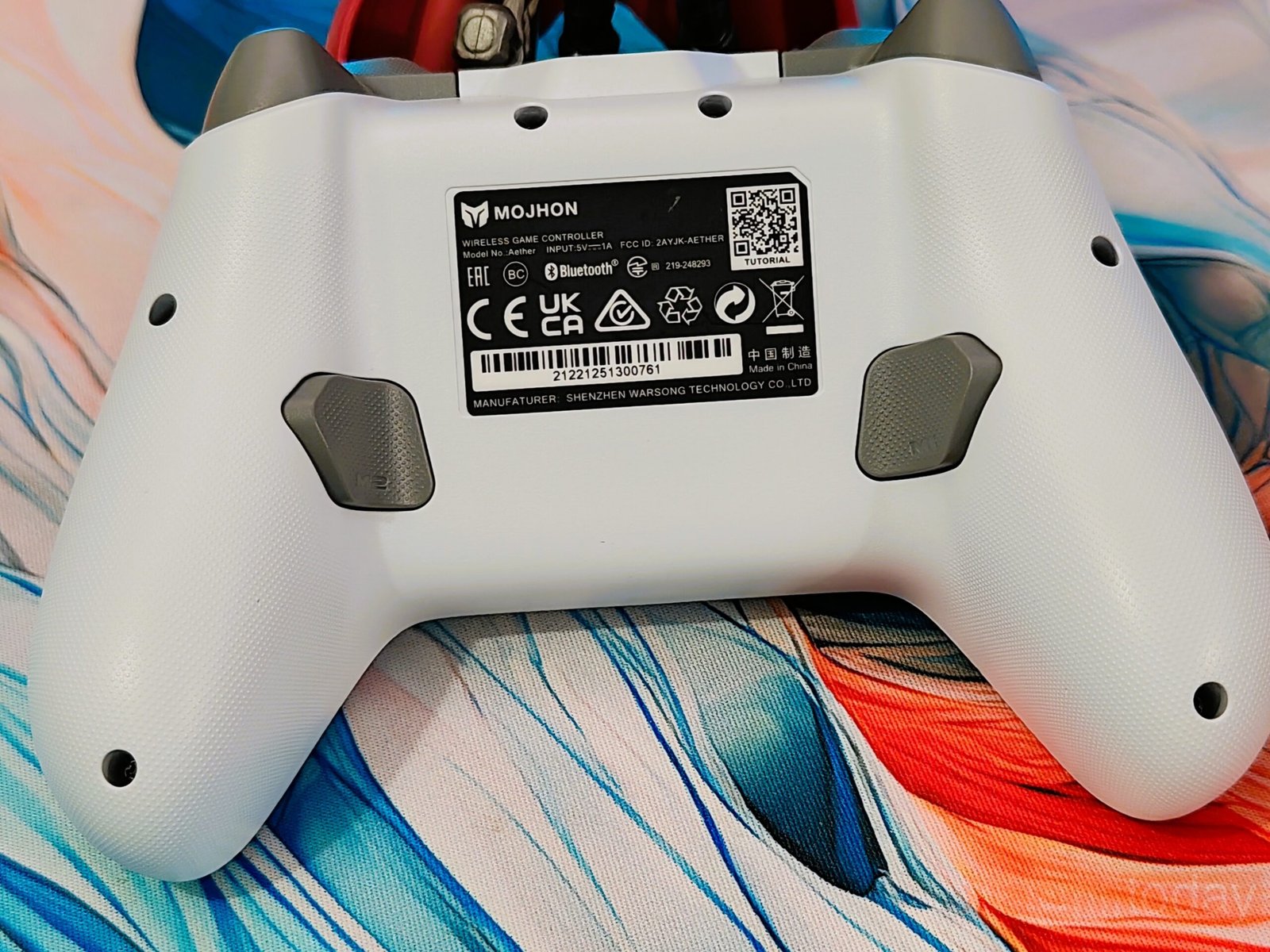
The back of the controller features two macro buttons, M1 and M2, built with mechanical switches for a precise click. They sit naturally under the fingers, allowing quick access without shifting grip. For smaller to medium hands, the controller feels comfortable, though those with larger hands may find the fit a bit tighter. These buttons add practical flexibility by letting players assign extra functions for faster control in games.
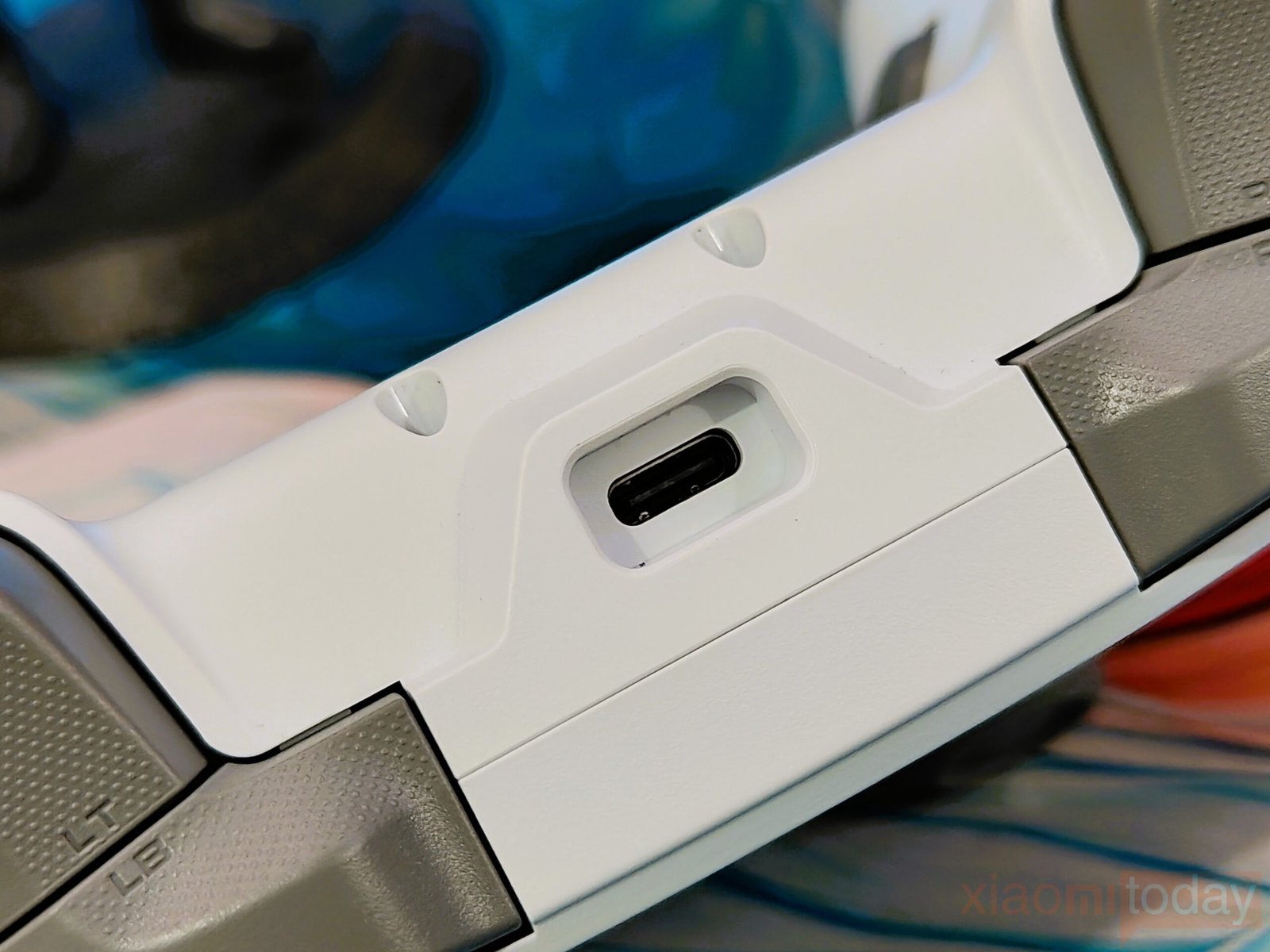
At the top of the controller, between the shoulder buttons, sits a USB Type-C port used for charging, wired play, and firmware updates. The package does not include a USB-C cable, which could be a drawback for some buyers expecting one. While many users likely have spare cables available, leaving them out means an extra step for those who want to use the controller right away.
The new vibration motors have been upgraded with a larger design, giving a stronger and clearer feedback during use. A high‑voltage drive improves texture at lower speeds, making subtle vibrations easier to notice. The addition of an H‑bridge chip allows forward and reverse rotation, so the motor can stop and change direction smoothly without dragging. This helps deliver more accurate and responsive vibration effects during gameplay.
MOJHON 2.4GHz Wireless Adapter
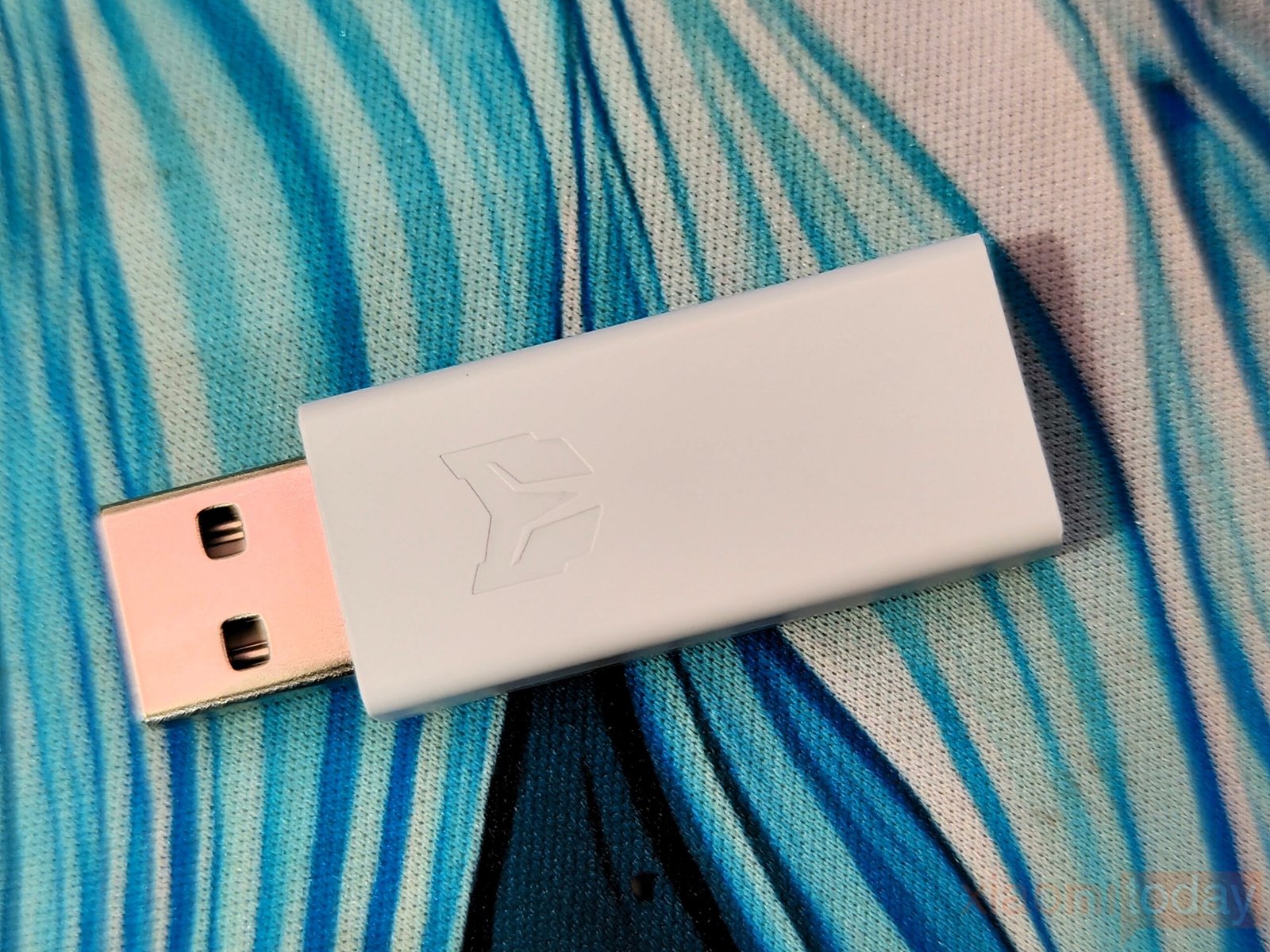
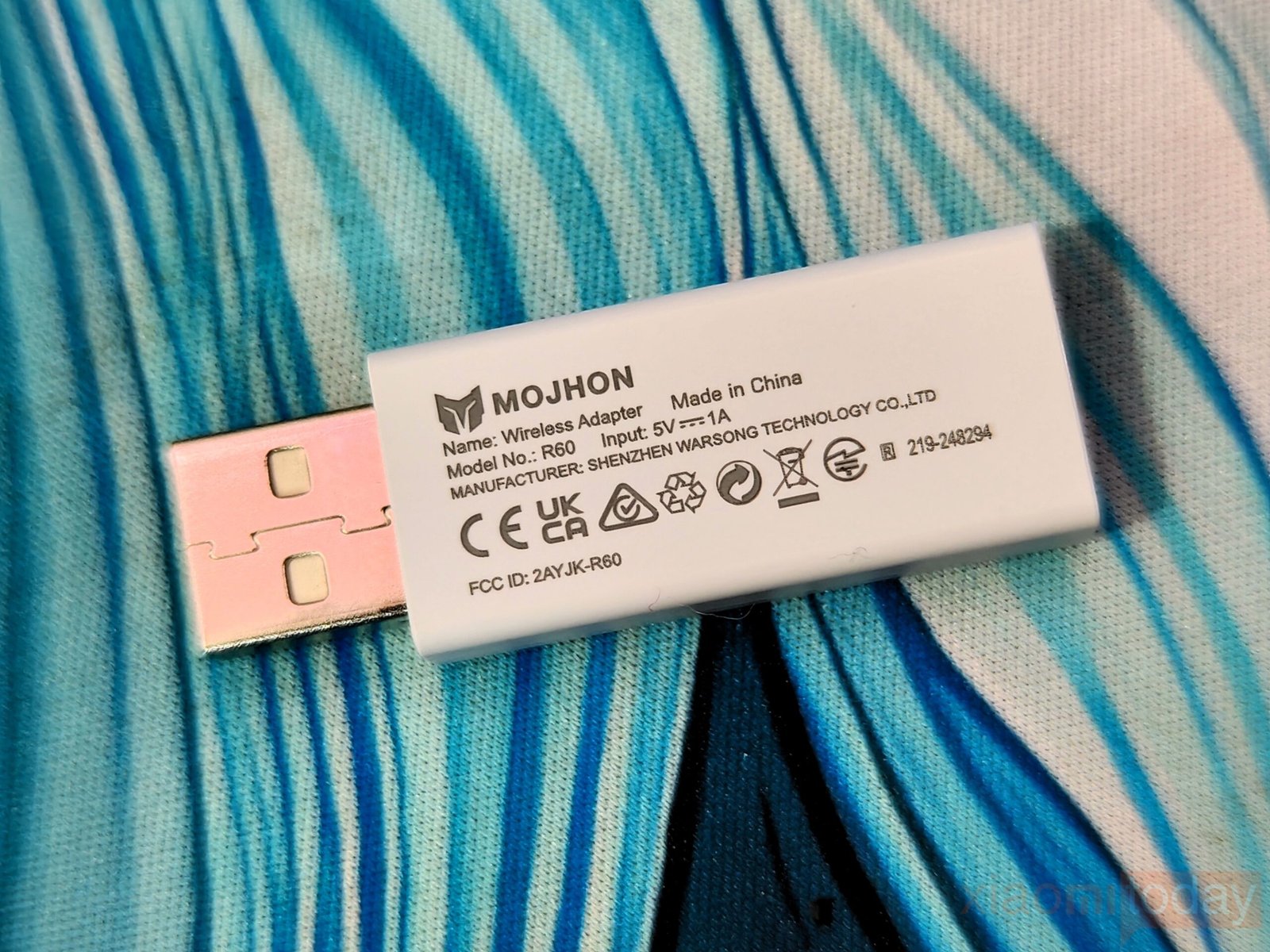
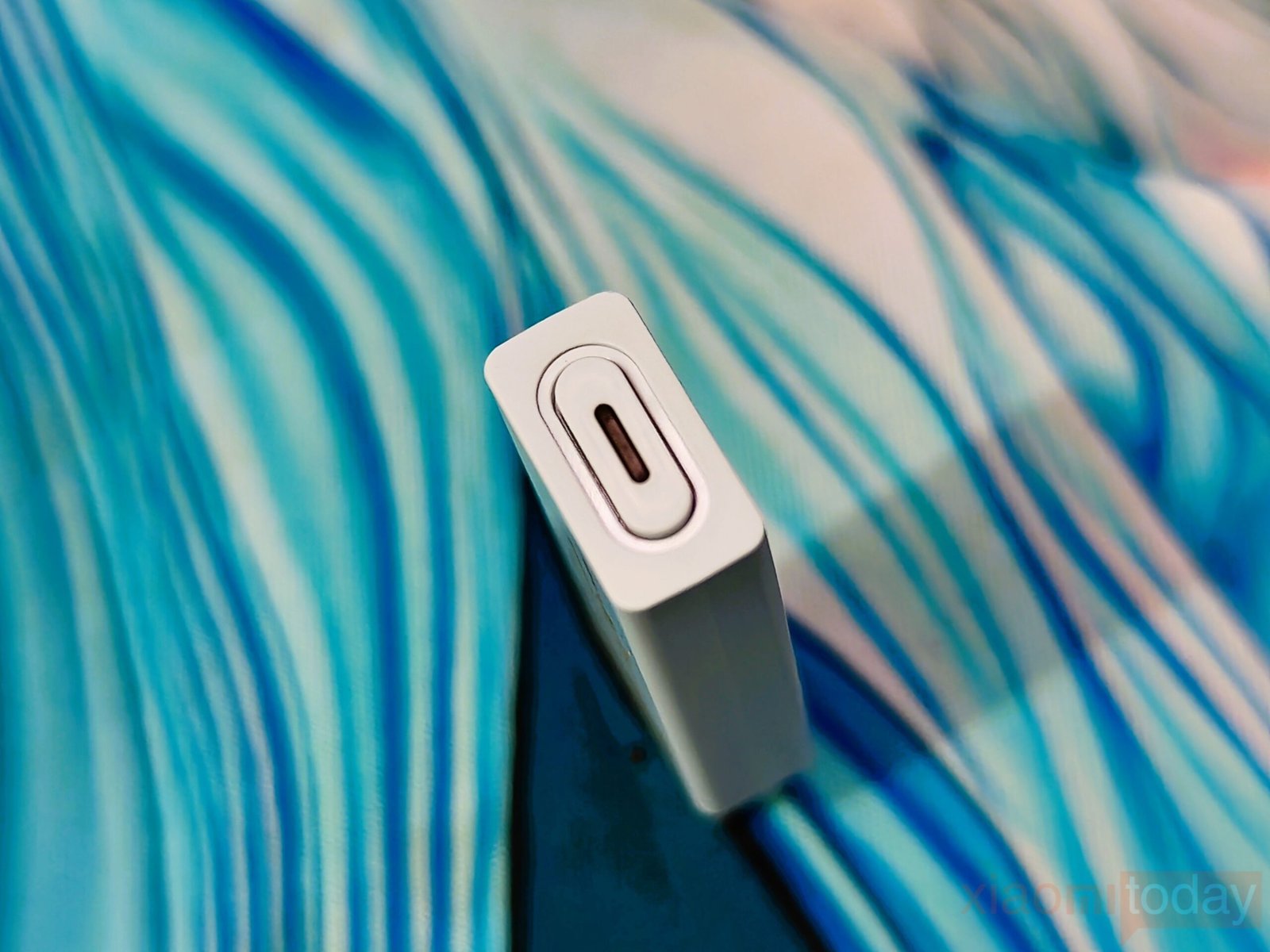
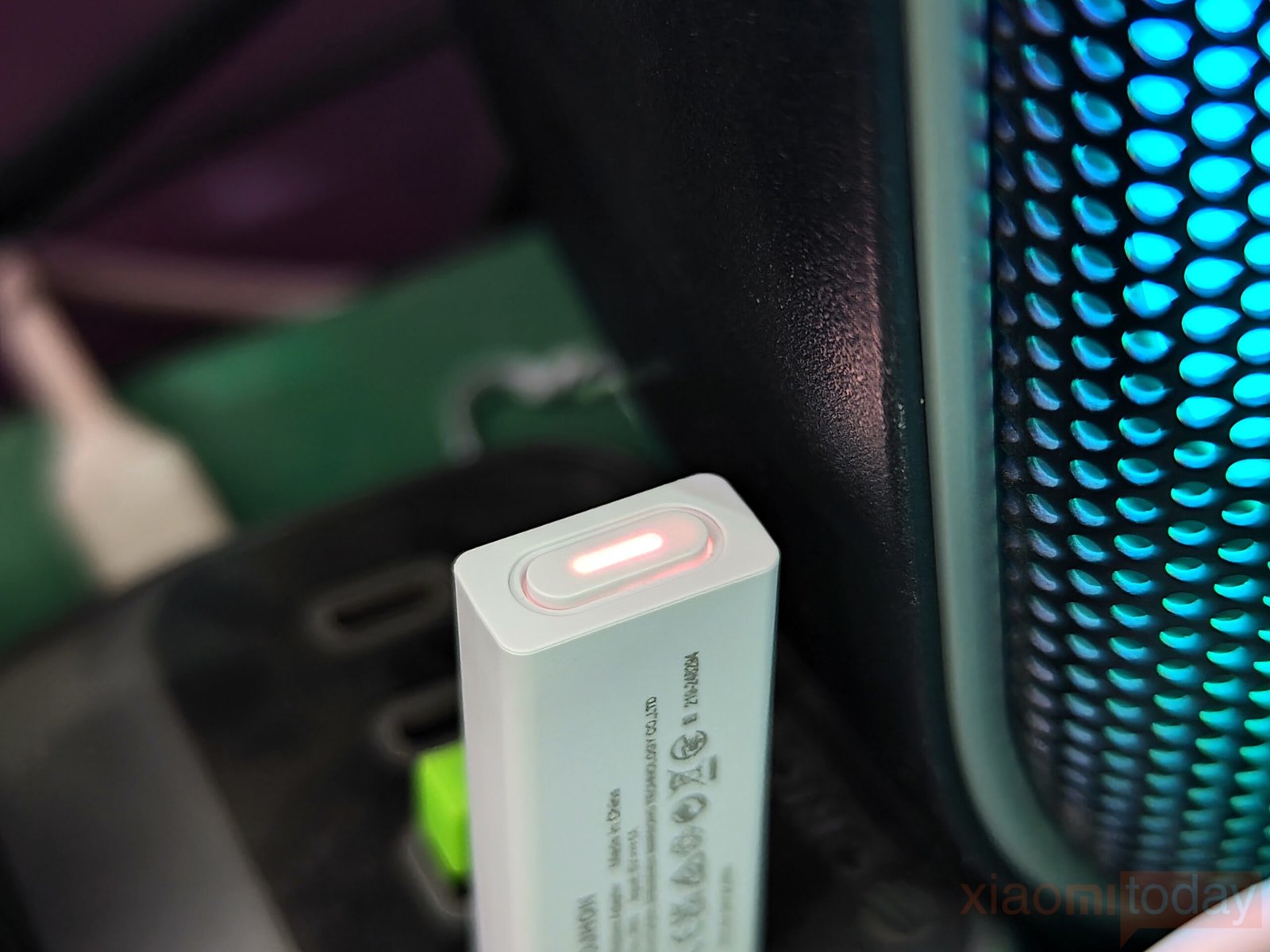
The MOJHON 2.4GHz Wireless Adapter features a compact rectangular design with a matte finish that gives it a solid and practical feel. It connects through a gold-plated USB Type-A port and includes a small LED indicator for connection status. The back carries the MOJHON logo and model R60 marking, while the subtle ridges along the sides provide a slight texture without affecting handling or fit.
Screen Functions
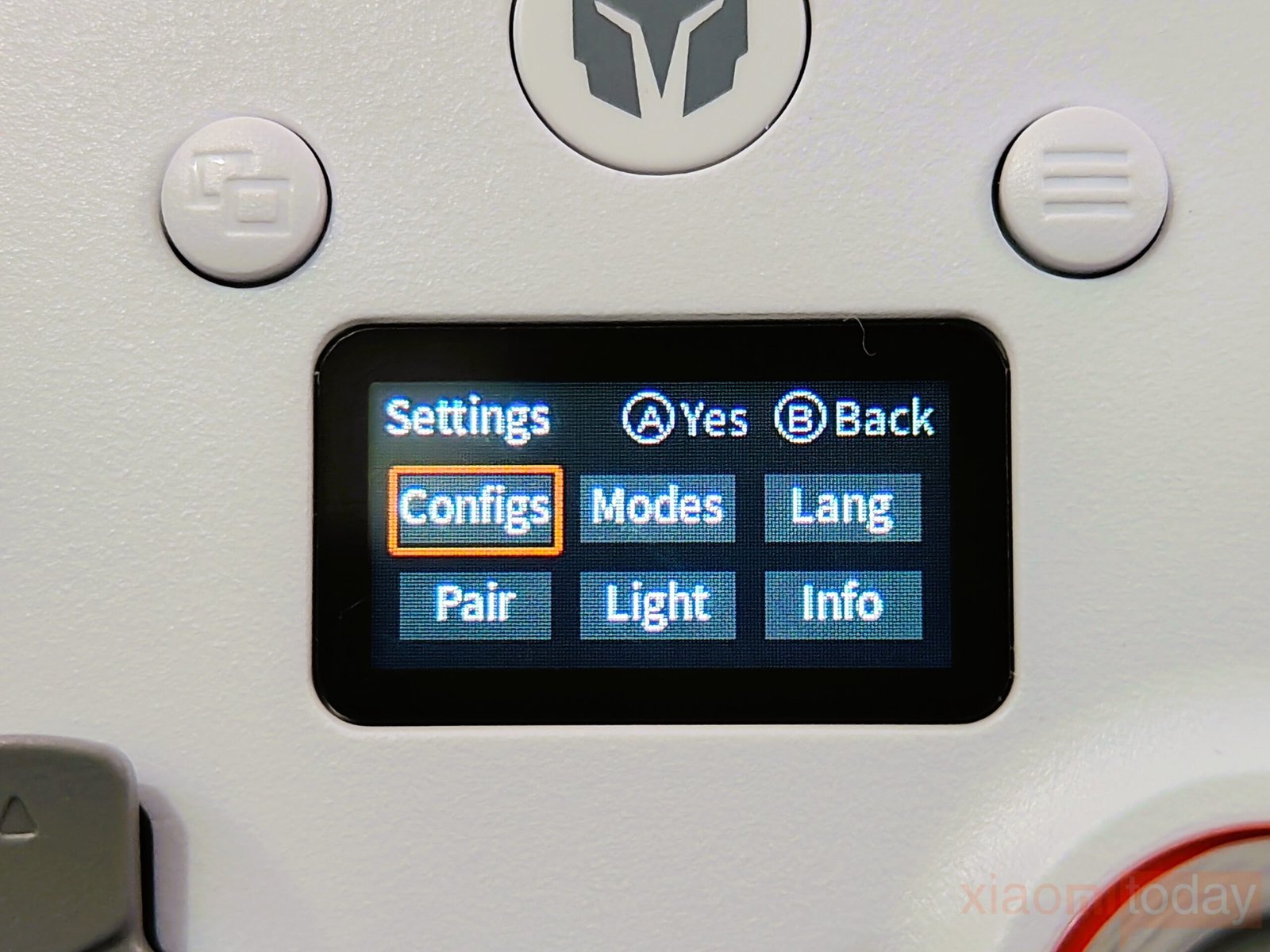
The controller includes a 0.96‑inch display that handles all configuration settings. Pressing the FN button opens the setup menu, where navigation is done with the D‑Pad, A is used to confirm, and B to cancel or return. During setup, the controller does not send inputs to the connected device. To reduce power drain, the screen switches off automatically after one minute of inactivity and can be reactivated by pressing the FN button.

The home screen provides a quick overview of the controller’s mode, connection status, and battery level. Switching between Switch and Xinput modes is done directly through the menu, with Xinput required for iOS and Android Bluetooth connections.

The screen’s backlight has four brightness levels, adjustable with the left and right inputs on the D‑Pad. This helps balance visibility and power consumption depending on usage conditions.

A section of the menu displays device information, including the current firmware version and a QR code for technical support.


Through the screen, the controller allows adjustment of the joystick dead zones. Both sticks can be configured individually, which helps address drift or fine‑tune sensitivity.

The two extra buttons, M1 and M2, can be customized using the mapping function. Remapping is done from the menu and can be cleared by assigning a button back to its default value.

Up to 14 buttons support the Turbo function, including ABXY, D‑Pad inputs, triggers, bumpers, and the rear buttons. Turbo settings are applied or cleared directly through the display.

The hair trigger option shortens trigger travel, allowing quicker repeated activation. This setting is managed through the Trigger menu within the screen configuration.

The controller’s vibration can be set to four different levels, adjustable from the screen menu using the D‑Pad.
Finally, the display shows the battery status. A low‑battery warning notifies when charging is required to prevent the controller from shutting down mid‑game.
Connectivity
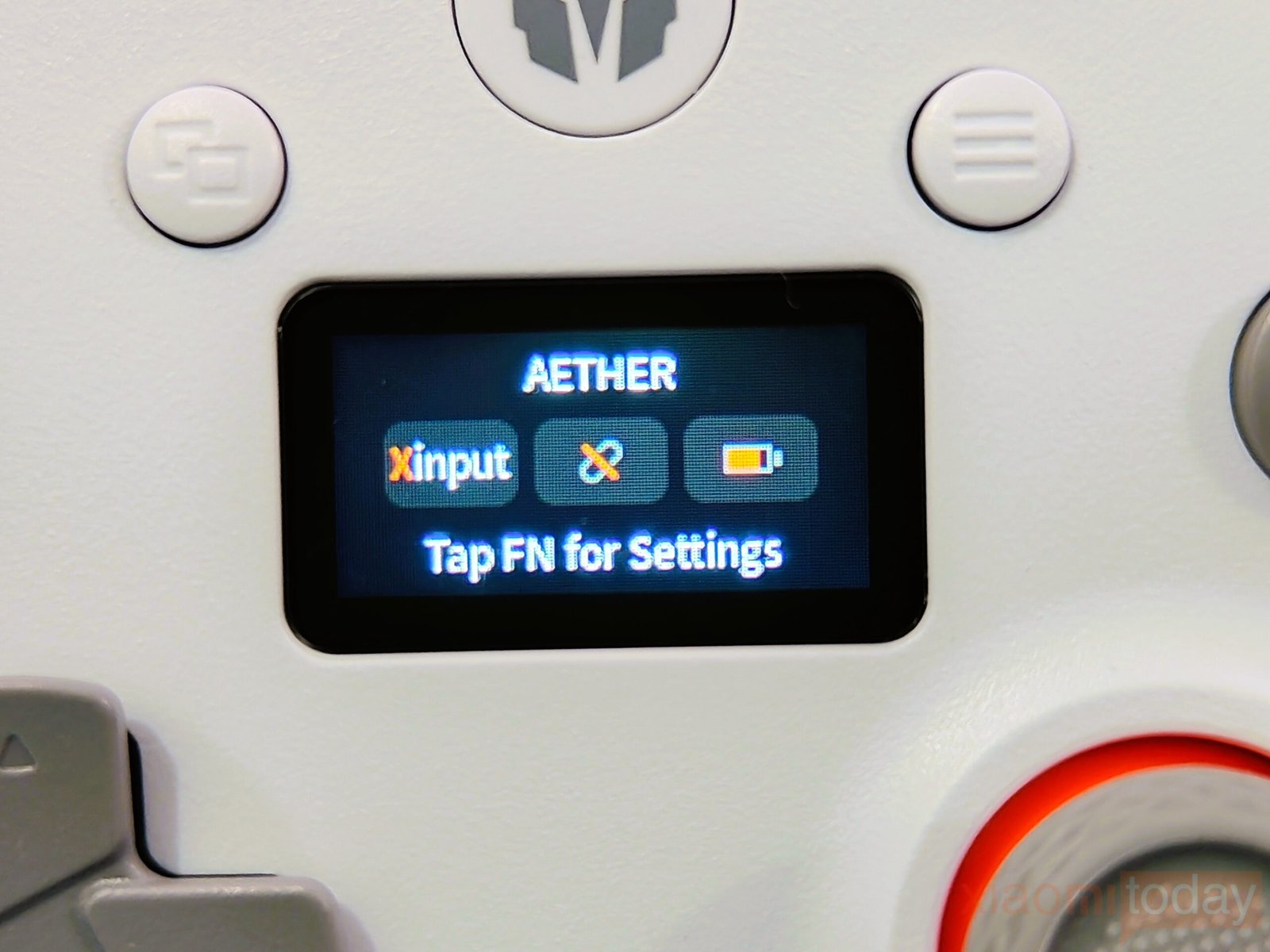
The MOJHON Aether Controller is designed with three connection modes: 2.4 GHz wireless, Bluetooth, and wired. This setup makes it suitable for use across PC, Nintendo Switch, Android, and iOS, giving players the freedom to choose the most convenient option depending on the platform. Switching between devices is simple, and the controller adapts well whether it’s used on a desk setup or on the go.

The 2.4 GHz connection is handled through the included USB receiver, which comes pre-paired from the factory. In most cases, plugging it into a PC and powering on the controller is enough to start playing. If pairing needs to be redone, the process involves holding the receiver’s button to enter pairing mode and confirming the connection through the controller’s settings. This ensures a stable and low-latency link, which is especially useful for fast-action games.

Bluetooth offers another convenient option for players who want wireless use without the dongle. Pairing is done through the controller’s settings, and the device appears under different names depending on the mode—either as an Xbox controller in Xinput mode or as a Pro Controller when connected to the Switch. Smartphones and tablets also recognize it through the Bluetooth list, making it simple to connect and reconnect without extra steps.
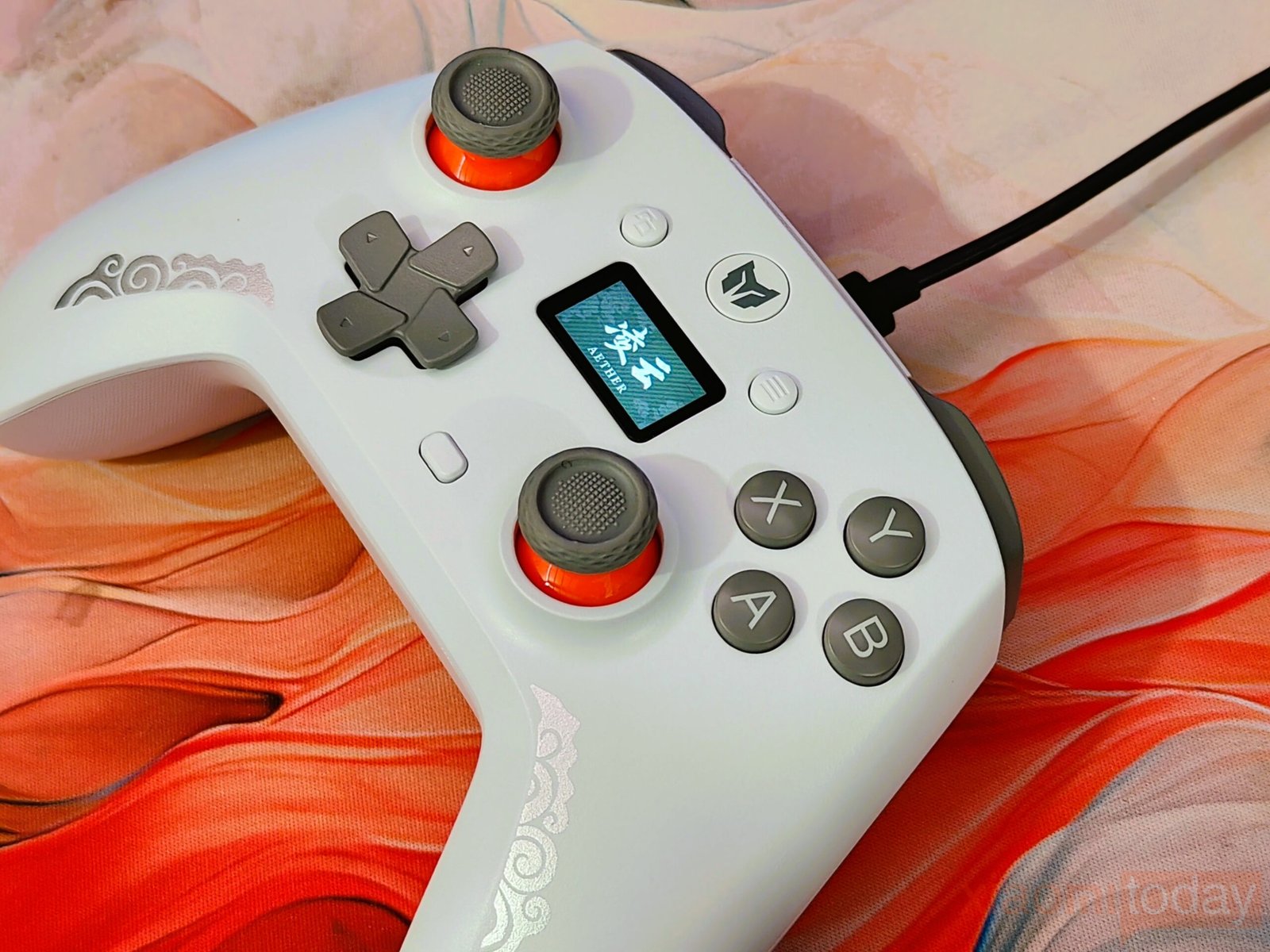
For the most reliable connection, the controller supports a direct wired link via USB Type-C. On PC, it defaults to Xinput for broad compatibility, while on the Switch, it functions as a Pro Controller once enabled in system settings. This method guarantees consistent performance without input delay and removes concerns about battery life. Wired mode also serves as a dependable backup if wireless options aren’t preferred.
Battery
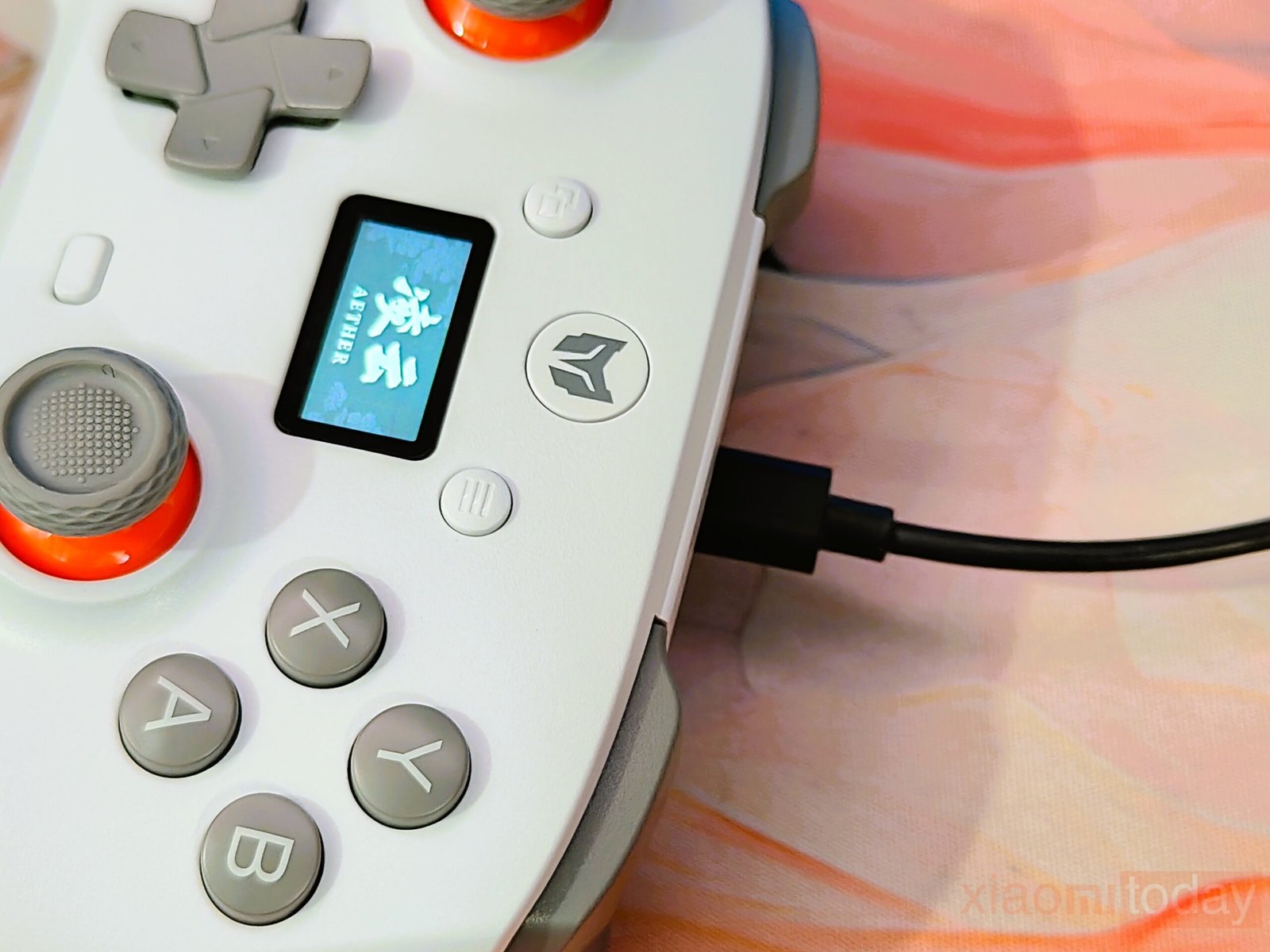
The controller comes with a 600 mAh battery, offering up to 14 hours of playtime on a single charge. For someone playing about two hours a day after work or school, the battery can last close to a full week before needing to recharge. This balance of capacity and usage makes it reliable for daily gaming without the hassle of frequent charging.
Use & Gaming Experience
Over two weeks of testing, the MOJHON Aether handled regular use on both PC and Nintendo Switch without issues. Pairing was quick, whether using the 2.4 GHz dongle or Bluetooth, and the wired option worked right away on Windows. The grips stayed comfortable during longer sessions, and the analog sticks kept their accuracy without drift. Battery life averaged about 12 to 14 hours, which meant recharging once a week with moderate play.
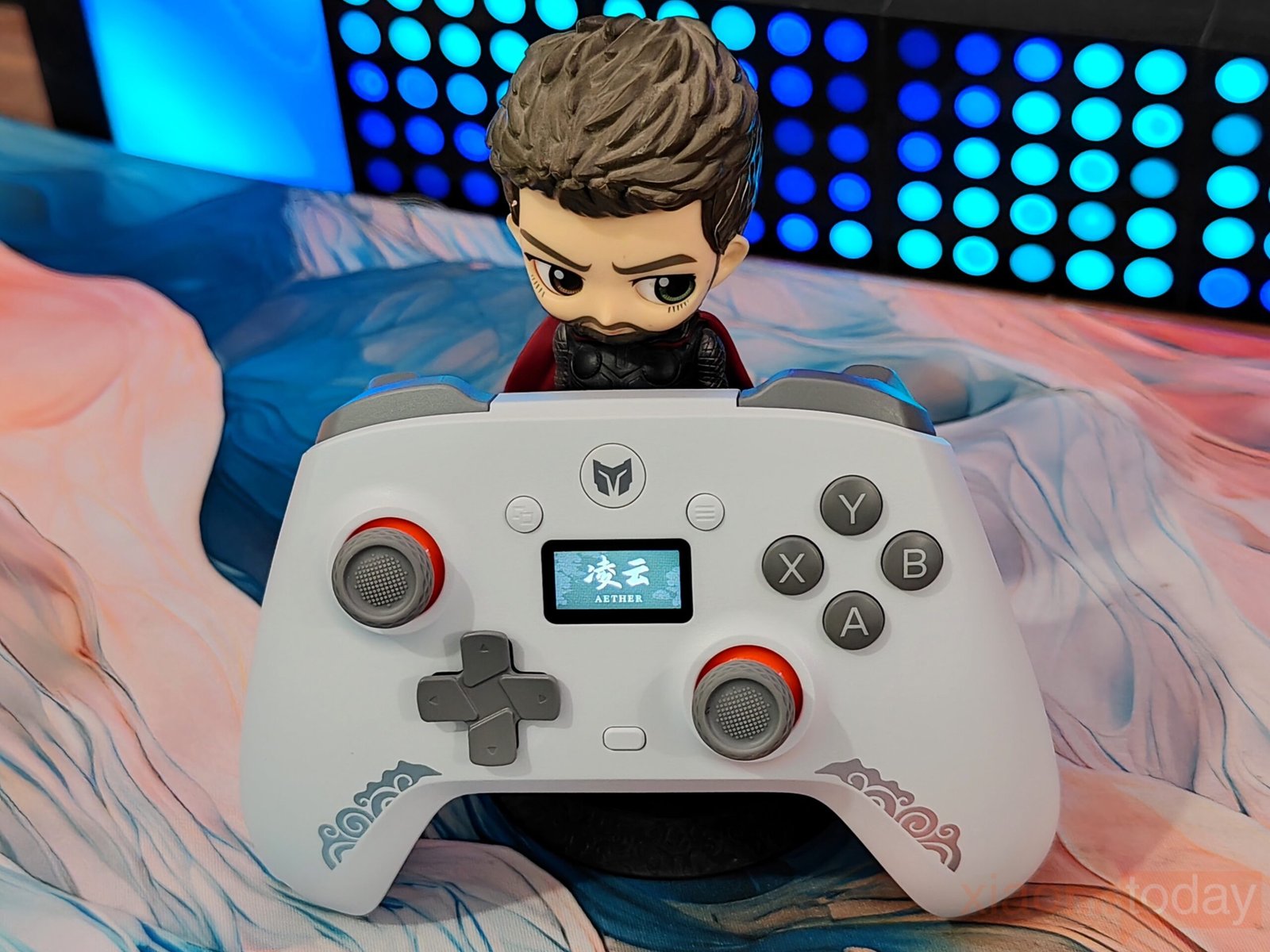
On PC shooters, the Hall Effect sticks gave smooth aim control, while the trigger modes were useful for faster input in action titles. The controller worked well on the Switch, with responsive vibration and steady inputs. The D‑pad was fine for most games, but felt less consistent when pressing diagonals in fighters. The two back buttons were easy to reach for quick actions, though the layout may feel a little cramped for players with bigger hands.
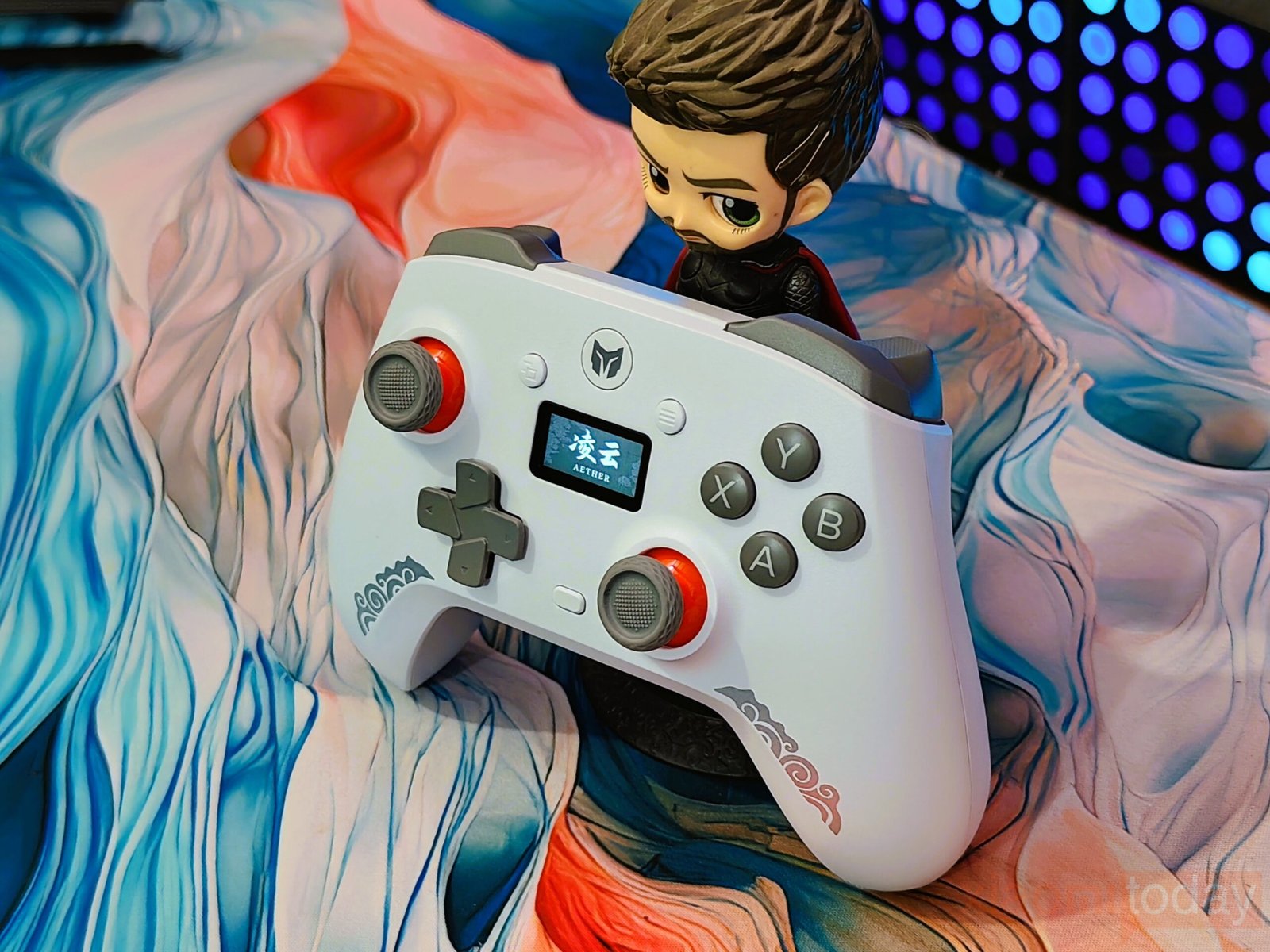
The small display turned out to be practical for daily adjustments. Switching modes, changing vibration strength, or setting dead zones could all be done directly on the controller without software. Not including a USB‑C cable was inconvenient, but once connected, wired mode ran smoothly. After two weeks, the Aether showed it can handle both casual and competitive gaming, offering a good mix of features at its price.
Conclusion
The MOJHON Aether Controller is available now. For more information, visit the official BIGBIGWON website. For detailed tech reviews, click here.



